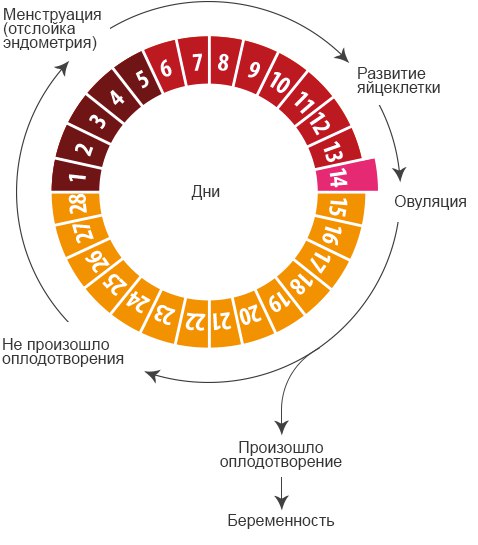Greetings, dear friends.
Today I want to disclose such an important topic for girls to help understand their physiological features. Also, the article will be a kind of assistant to male trainers in the construction of training, as well as the concept of the female body and processes..
Erroneously, coaches prescribe exercises without starting from the well-being of the client on a particular day, or without emphasizing the physiological differences with men, and, especially, the use of large weights.
I will tell you a small secret…or rather, give you useful information, or, answers to questions.
- Is there a difference in the training process of men and women?
- Do women need to be given heavier weights to make progress?
- Is it necessary to tolerate sluggishness, to train during a cycle?
- When can I train and when not to train?
What you need to know about the female body?

No, not the mood swings and irritability.
In girls, there are 4 periods per month that significantly affect the training process: Follicular, Ovulation, Luteal and Menstruation. During one of these, you should give maximum exercise, while during the other, you should remove weight and emphasize calmer physical activity.
- In each of the periods, metabolism (metabolism) behaves differently. There can be as accelerated metabolism, when the assimilation of nutrients and nutrients is lightning fast (which applies not only to the consumption of food), but also conducted and the renewal of cells and tissues. Also, the reverse process, the entire turnover of processes goes in a slowed down state. In such a period it is desirable not to give a large load to the body.
- Follicular phase. During this period, the female body is maximally sensitive to insulin. This means that by slightly increasing the level of carbohydrates in your diet, they will be used as energy for the muscles. In the same way, you need to focus on the progress of the training process, increase the intensity, add weights.
- Ovulation. During this period in a woman’s body tendons, joints, ligaments are very pliable, due to the increased amount of the hormone – estrogen, which significantly affects the strength of collagen in the body. If you do not technically do the exercise correctly – there is a great chance of injury or sprains.
- Luteal phase. At this time it is important to emphasize aerobic training and the development of endurance. Fat is better utilized as energy. The body is in a state of preparation for menstruation. The amount of serotonin (pleasure hormone) drops and we feel a drop in energy and mood.
- Menstruation. In the first few days it is better to refuse to exercise, so as not to aggravate spasms in the female organs (girls will understand these squeezing pains in the lower abdomen and lumbar region). It is desirable not to load the body, and maximize the balance of nutrition.
Briefly about the concept of the cycle.
Monthly cycle – is a natural phenomenon of every woman’s body: preparation for pregnancy, fertilization and cell renewal. The average cycle length is 28 days.
 Menstruation (day 1-5) and follicular phase (day 6-14) – high estrogen levels, medium progesterone levels, normal body temperature.
Menstruation (day 1-5) and follicular phase (day 6-14) – high estrogen levels, medium progesterone levels, normal body temperature.
Ovulation (14-17th day) – huge chance of fertilization, increased desire – estrogen levels peak, progesterone levels rise, temperature rushes (or “hot flashes”).
Luteal phase (day 18-28) – estrogen levels decrease, progesterone levels increase, body temperature stabilizes.
After the luteal phase menstruation begins, and then everything goes in a circle 🙂
And now I would like to reveal to you in more detail the processes that occur in each of the phases. And how you need to train, depending on how you feel and the level of hormones in the female body.
Follicular Phase
Shortly put, this is the first week after menstruation.
Training. During this period, it is worth focusing on improving the performance of the training plan. You can give quite intense exercises, add weights. This phase is characterized by a huge tolerance to muscle pain, so the body is ready to produce strength and energy, to work for a sufficiently long period of time taking into account the use of muscle glycogen reserve as fuel.

Nutrition. Your body will be sensitive to the amount of insulin that will be in the blood, and this suggests that you should increase carbohydrates in your diet, but preferably at the expense of complex carbohydrates (cereal, whole grain bread, vegetables) rather than fast ones (pastries, sweets, etc.). This action will give a boost in the acceleration of metabolism, which is significantly reduced during menstruation, when the female body was working in an “exhausted state”.
And don’t forget…During productive work, glycogen (our fuel) reserves in the muscles are exhausted, so remember that it is necessary to replenish them with a properly composed high-carbohydrate menu. .
Ovulation
The second week after your period. Or…when a woman’s egg is ready to be fertilized 🙂.
Exercise. Get yourself a record in strength performance! After all, the productivity of female muscles increases by 10-15% of the usual state, it is in the ovulation period, if you compare c others.

It’s important to remember. There is a huge amount of the female hormone estrogen (for egg release) in a woman’s blood, which greatly affects neuromuscular control and collagen metabolism in the body. Note that this affects the behavior of joints, ligaments, tendons during heavy weight lifting. The likelihood of joint injury is 5 times greater, therefore, be sure to follow the technique of the exercise c weight and their wards-girls. Thus, train intensely, but control your fatigue.
Nutrition. Our female metabolism is at its peak state, therefore, during this period “burns everything lightning fast” (we are not talking about cake and chocolate bars) and too much hunger is inherent. This state is also acceptable after the training process. Feeling hungry and tired? This is normal. Be sure to try to balance the amount of proteins, fats, carbohydrates in your diet and increase your calorie intake at the expense of the first two.
Luteal Phase
The third week after menstruation, or…the week BEFORE….
The most unloved period, for us girls, when you start fighting your body at every turn.
Serotonin and hormone levels drop. Inherent apathy, laziness or a decline in mood and strength. In this phase is inherent in high cardiovascular tension, anxiety and anxiety. The amount of endurance in the training process falls (strength is not enough for long, alas). In addition, the body gains weight (in the form of water), or we are simply flooded, so partially uncomfortable to perform exercises.
 Training. In this phase it is advisable to use cardio training, exercises in the gym with small weights for a greater number of repetitions, emphasizing the upper part of the body than the bottom. Also, from severe fatigue and discomfort, can help static exercises, yoga, Pilates. The main thing is not to load the body, because the benefits and progress should not be expected.
Training. In this phase it is advisable to use cardio training, exercises in the gym with small weights for a greater number of repetitions, emphasizing the upper part of the body than the bottom. Also, from severe fatigue and discomfort, can help static exercises, yoga, Pilates. The main thing is not to load the body, because the benefits and progress should not be expected.
Nutrition. Why is so increased craving for sweets, high-calorie and everything harmful? The answer is simple – reduced concentration of joy hormones, which gives a bad mood and irritability. Instinctively, our female body requires a sharp increase in the amount of carbohydrates in the diet, which will give a burst of endorphins, serotonin and provide a good mood and high spirits.
But, c lowered, in this period, metabolism and insignificant sensitivity to insulin, do not be fond of many treats. There is a great chance of gaining excess weight at the expense of fat, with which we are fighting so hard.
 What to do now, you ask?
What to do now, you ask?
Try to compensate for low serotonin levels by using a tryptophan dietary supplement, or increase your diet with foods such as lean meats, dairy products, legumes, and seeds, which will provide a natural release of happy hormones.
Phase of menstruation Just rest….
Just rest….
During this period, when the cramp grabs the lumbar region or the lower abdomen, you don’t really want to train or move.
It is necessary a couple of days to restore strength and all the processes, removal of excess water and bringing to a normal level of the whole body of a woman.
Training. Exclude workouts for the first 2 days when the discharge is quite copious and cramps are present. Start incorporating cardio workouts after the third day and slowly go into the follicular phase (intense workouts).
Nutrition. Include plant fats rich in Omega-3 (olive oil, flaxseed oil, pumpkin seed oil, etc.) in your diet, balance your carbs.
And when you get back into the follicular phase again, you can increase your exercise levels again, add weights and complex carbohydrates to your diet.
Conclusions.
The female body is so interesting with its own processes and hormonal background. So, don’t give us a hard time about our moods being so fickle 🙂
No matter how it is, but it is important to understand our physiology.
Now, dear readers, knowing all the nuances of the processes, you can make and adjust the training program for each phase, without harming the body and make the hormones work for you.
Author of the article:
Nastya Vershinina (instagram.com/realcurl),
personal coach of Bodybuild Chernigov






